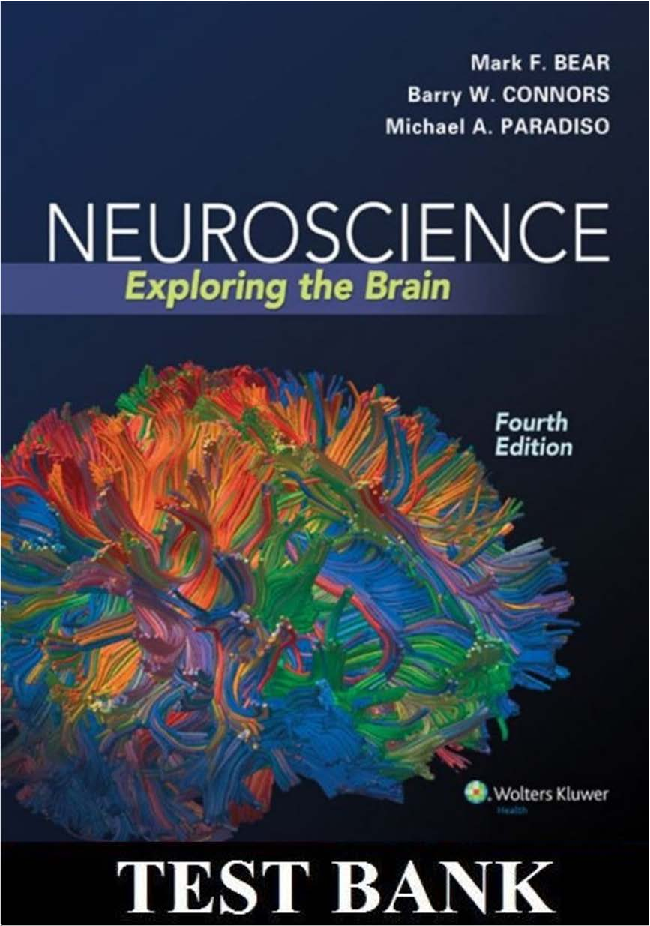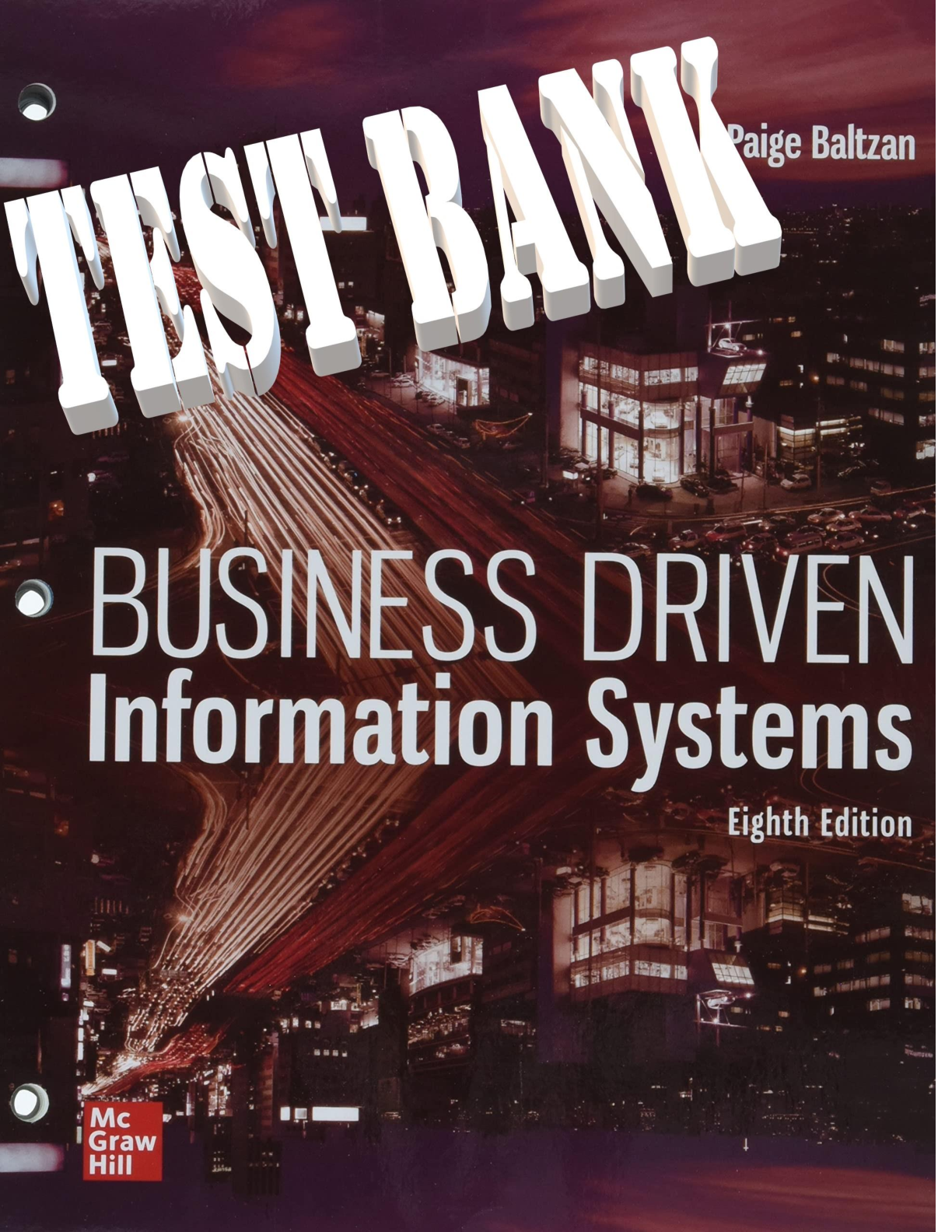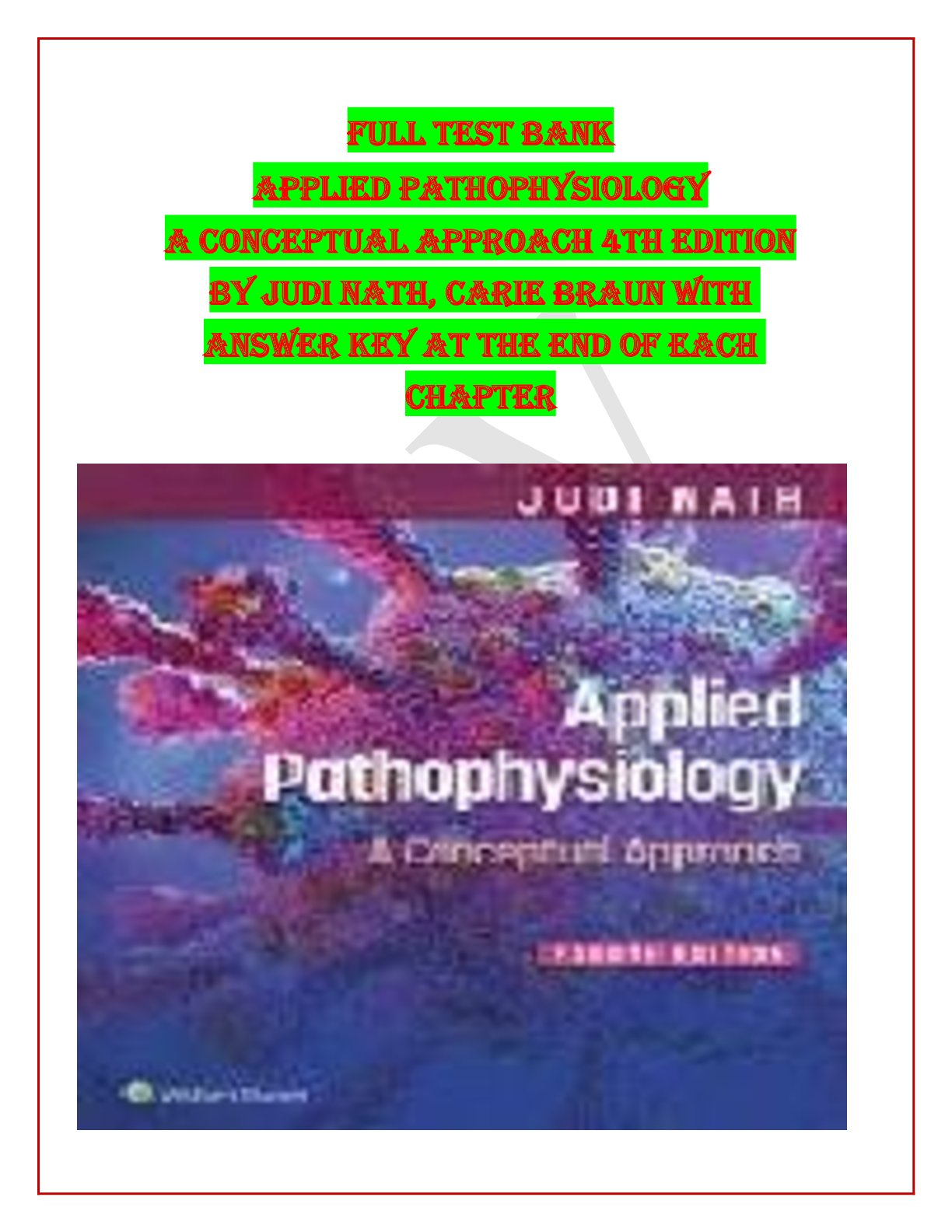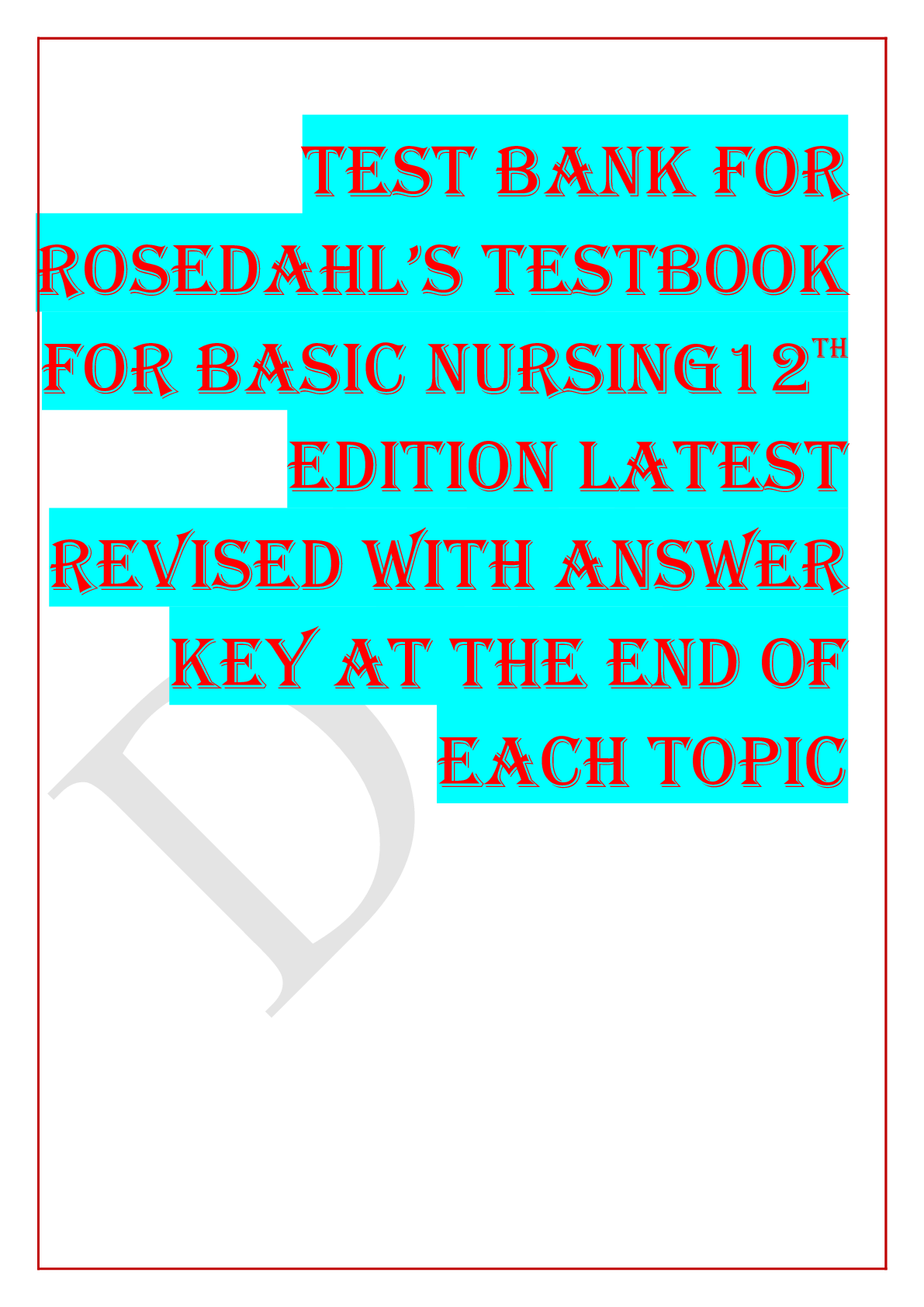Nutrition > TEST BANKS > Test Bank for Advanced Nutrition and Human Metabolism, 7e Sareen Gropper, Jack Smith, Timothy Carr A (All)
Test Bank for Advanced Nutrition and Human Metabolism, 7e Sareen Gropper, Jack Smith, Timothy Carr Answers At The End Of Each Chapter
Document Content and Description Below
Test Bank for Advanced Nutrition and Human Metabolism, 7e Sareen Gropper, Jack Smith, Timothy Carr Answers At The End Of Each Chapter-1. Most of the metabolic energy produced in cells is made in the m... itochondria. a. True b. False 2. An increase in the concentration of a substrate will increase the rate of the enzyme-catalyzed reaction. a. True b. False 3. Polysomes function to transcribe mRNA into proteins. a. True b. False 4. If two enzymes (e.g., pyruvate dehydrogenase and pyruvate carboxylase) compete for the same substrate (pyruvate), the one with the higher Km has less affinity and will be more active when pyruvate concentrations are high. a. True b. False 5. Transcription of DNA cannot be altered. a. True b. False 6. The nuclear envelope is a single membrane structure that helps to isolate the nucleus from the rest of the cell. a. True b. False 7. The lipid bilayer determines the function of the plasma membrane, while the proteins are primarily responsible for the structure of the membrane. a. True b. False 8. When discussing enzyme kinetics, Km refers to the substrate concentration at which the enzyme is saturated and functioning at maximal velocity. a. True b. False 9. Peripheral proteins are involved in cell-cell recognition, whereas integral proteins function primarily as receptors/transporters. a. True b. False 10. The various components within a cell (e.g., mitochondria) are not “free-floating” in the cytosol, but rather, are held in place by the cytoskeleton. a. True b. False Name: Class: Date: Chapter_01_The_Cell A_Microcosm_of_Life 11. Different cells express different proteins because they contain different sequences of DNA in the nucleus. a. True b. False 12. Oncosis results from cell injury and is associated with cellular swelling and swelling of the mitochondrial nucleus. a. True b. False 13. Allosteric regulation of enzymes is carried out by modulators, other proteins that bind to the enzyme to inhibit its activity. a. True b. False 14. Most cellular reactions are irreversible because the same enzyme that catalyzes the conversion cannot catalyze the reverse reaction. a. True b. False 15. The plasma membrane is a sheet-like structure composed solely of lipids. a. True b. False Indicate the answer choice that best completes the statement or answers the question. 16. Most receptor proteins are most likely which type? a. peripheral proteins b. internal proteins c. integral proteins d. glycoproteins 17. MicroRNAs are small noncoding RNAs that . a. enhance gene expression by activating mRNA expression b. silence gene expression by binding to mRNA to inhibit translation c. modify gene expression by replacing specific nucleotides in mRNA d. mediate DNA production in a reverse direction 18. All components of the electron transport chain are embedded in the . a. mitochondrial inner membrane b. mitochondrial outer membrane c. mitochondrial matrix d. cytoplasmic matrix 19. The smooth endoplasmic reticulum (SER) is associated with . a. lipid synthesis Name: Class: Date: Chapter_01_The_Cell A_Microcosm_of_Life b. protein synthesis c. the calcium ion pump necessary for the contractile process d. ribosomes and cytochrome P450 enzymes 20. In the cell structure, the provides support and controls the movement of cell organelles. a. endoplasmic reticulum b. mitochondrion c. cytoskeleton d. matrix space 21. What is released when nutrient molecules are oxidized? a. oxygen b. potential (or free) energy c. kinetic energy d. hydrogen 22. The cell organelle responsible for the initiation and regulation of most cellular activity is the . a. cytoplast b. nucleus c. mitochondrion d. nucleolus 23. What is the role of cholesterol in plasma membrane structure? a. to produce bile b. to regulate fluidity and permeability c. to reduce stability d. to produce hormones 24. Which organelle is composed of an extensive network of membranous channels that connects the nuclear membrane, the Golgi apparatus, and the plasma membrane? a. the lysosome b. the nucleolus c. the centrioles d. the endoplasmic reticulum 25. Which are highly specialized membrane proteins that modify the cell's response to its environment? a. transport proteins b. enzymes c. receptors d. peroxisomes 26. Elongation is the process by which . a. the mRNA strand is formed b. peptide bonds are formed between aligned amino acids after the amino acids are positioned [Show More]
Last updated: 5 months ago
Preview 5 out of 233 pages

Loading document previews ...
Buy this document to get the full access instantly
Instant Download Access after purchase
Buy NowInstant download
We Accept:

Also available in bundle (2)
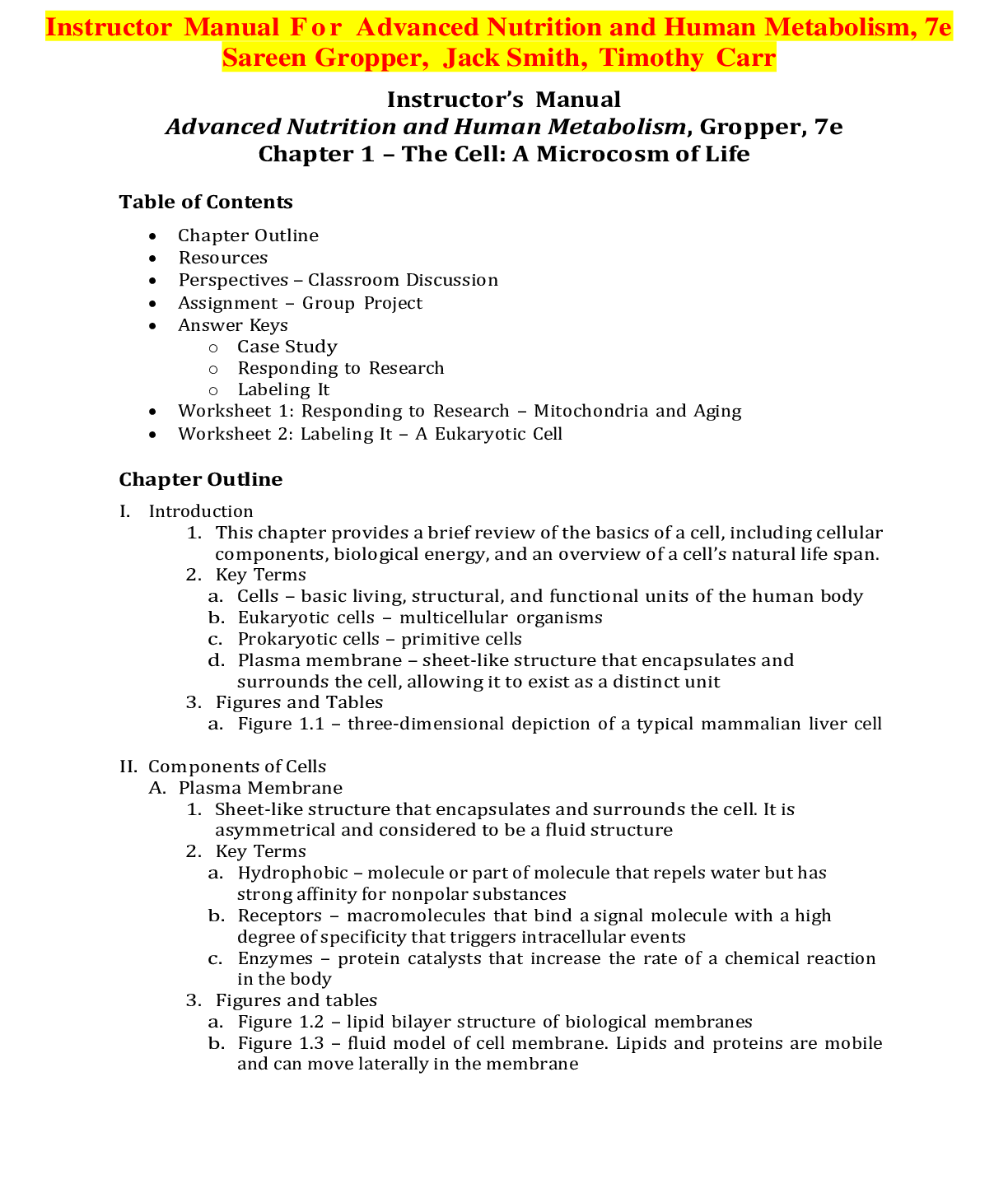
BUNDLE: TESTBANKS & INSTRUCTOR MANUALS for Advanced Nutrition and Human Metabolism, 7th Ed & 8th Ed, LATEST UPDATE Each Answered, Rated 100%
BUNDLE: TESTBANKS & INSTRUCTOR MANUALS for Advanced Nutrition and Human Metabolism, 7th Ed & 8th Ed, LATEST UPDATE Each Answered, Rated 100%
By LAVIE 5 months ago
$38.5
4
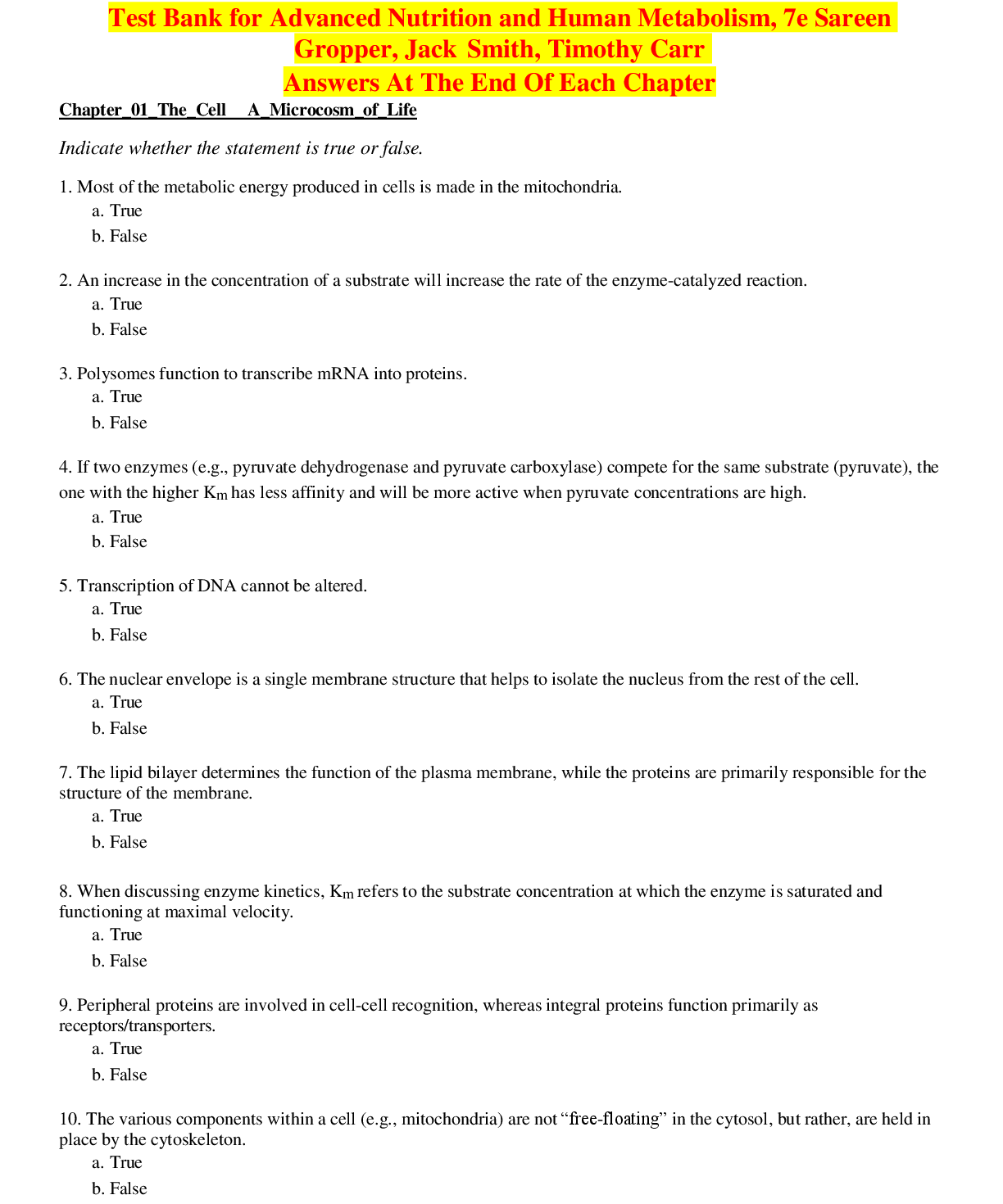
BUNDLE: TESTBANKS for Advanced Nutrition and Human Metabolism, 7th Ed & 8th Ed, Exams Questions & Answers All Rated 100%
BUNDLE: TESTBANKS for Advanced Nutrition and Human Metabolism, 7th Ed & 8th Ed, Exams Questions & Answers All Rated 100%
By LAVIE 5 months ago
$22.5
2
Reviews( 0 )
$16.50
Can't find what you want? Try our AI powered Search
Document information
Connected school, study & course
About the document
Uploaded On
Feb 26, 2025
Number of pages
233
Written in
Additional information
This document has been written for:
Uploaded
Feb 26, 2025
Downloads
0
Views
30

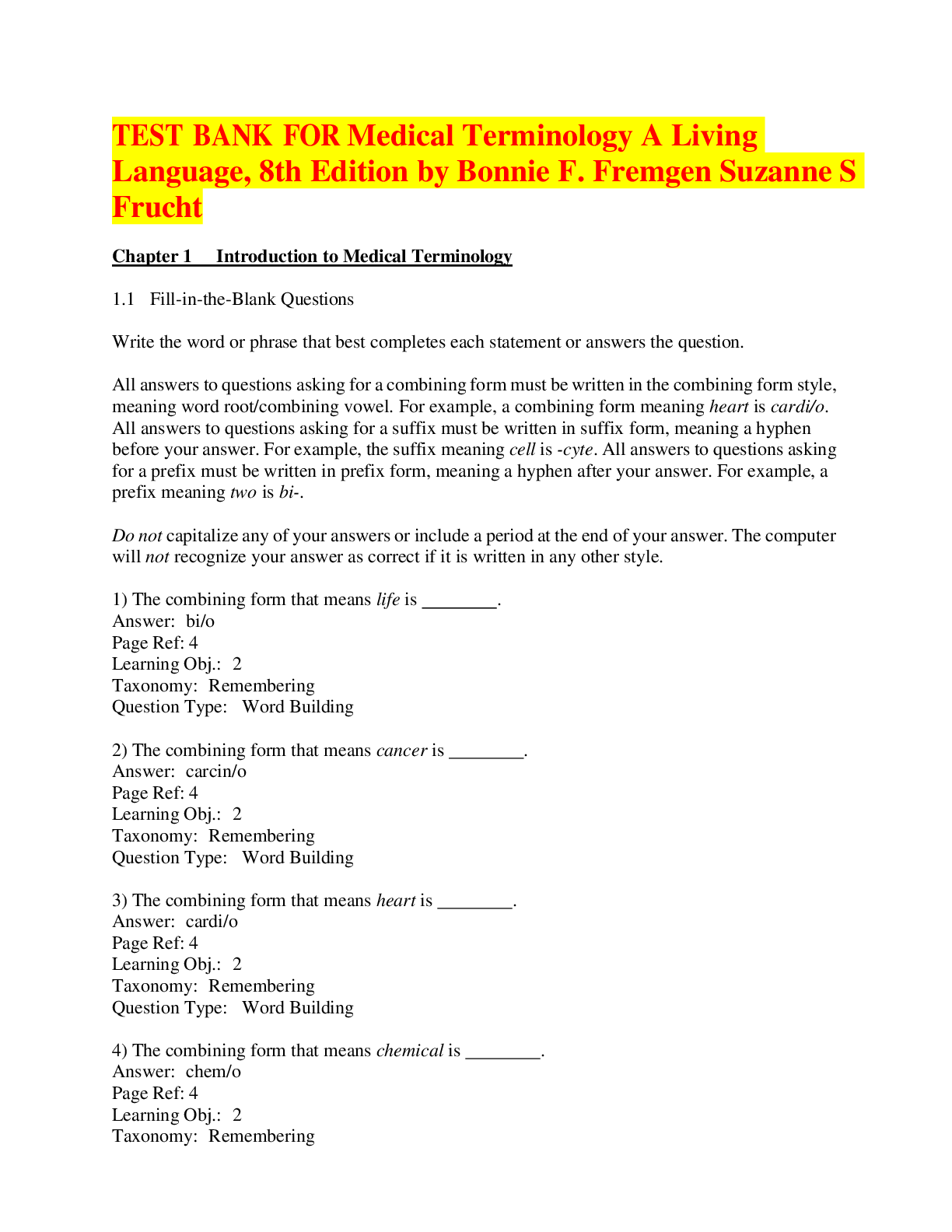
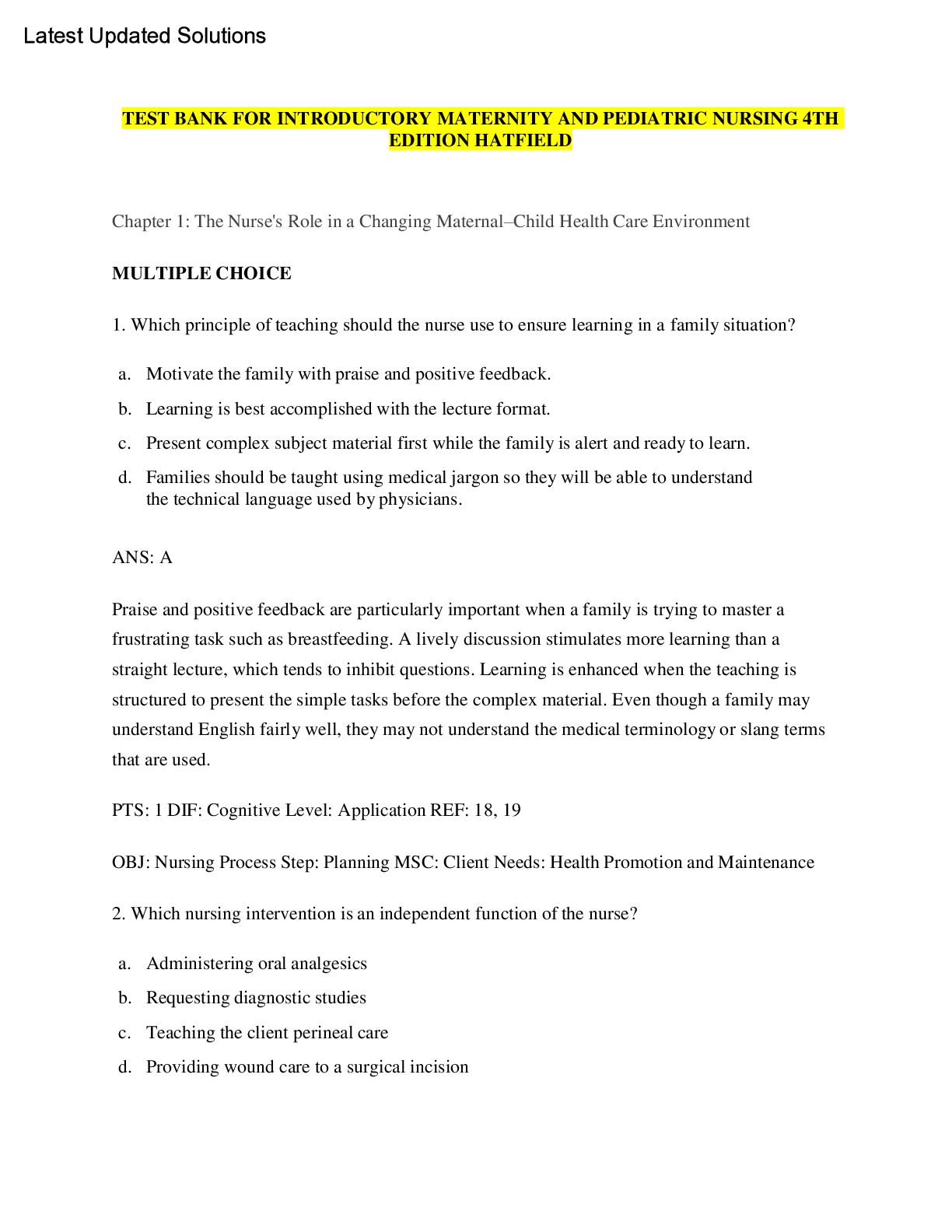
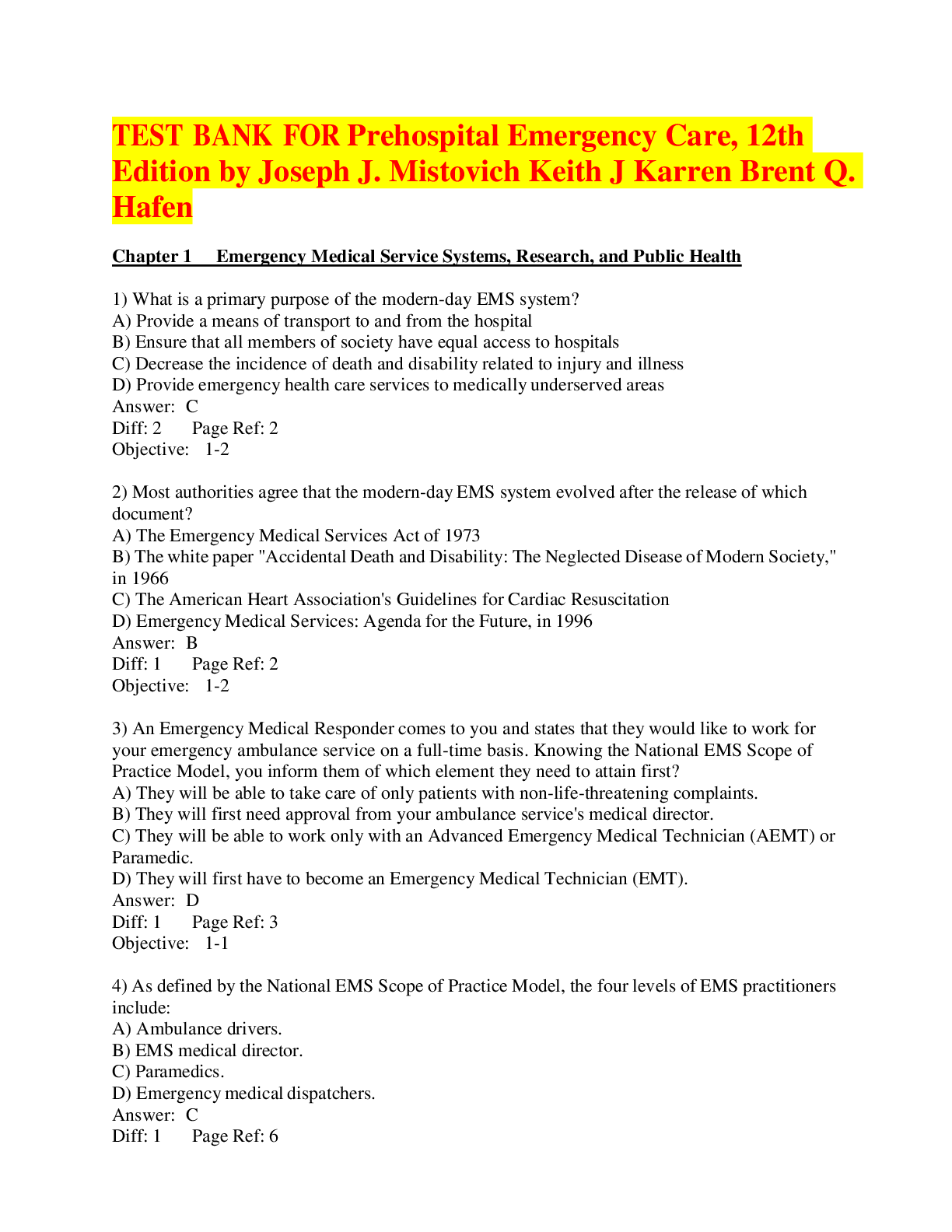


_compressed.png)
.png)
.png)


.png)
.png)

